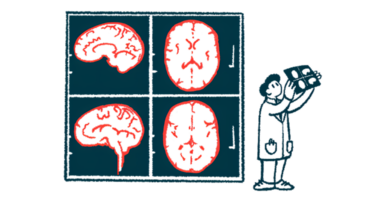Cancer Therapy Topotecan Could Be Repurposed to Treat MS: Study

A medication currently approved to treat certain kinds of cancer, called topotecan, could be repurposed for treating neuroinflammatory conditions such as multiple sclerosis (MS) because it reduces the inflammatory activity of immune cells called microglia.
That’s according to the study, “Myeloid cell-specific topoisomerase 1 inhibition using DNA origami mitigates neuroinflammation,” published in EMBO Reports, and led by researchers at the Karolinska Institutet.
Microglia are a type of myeloid cell and the resident immune cells of the central nervous system (the brain and spinal cord). While these inflammatory cells are important for defending the brain against infections, emerging research shows they play a central role in driving neuroinflammatory diseases like MS.
“The biotechnology industry has realized the potential for microglia-targeting strategies, and at least 20 new companies have started during recent years,” Robert Harris, PhD, professor at Karolinska Institutet in Sweden and co-author of the study, said in a press release.
Harris and colleagues conducted a computer-based screening to identify compounds that can reduce the inflammatory activity of microglia — for example, by prompting the cells to make less pro-inflammatory signaling molecules.
“The data-mining of open access databases is an approach that is both time and economically efficient, and there is so much data available nowadays. We were lucky to identify four compounds with the properties we wished for, and one of these proved to be promising for our continued investigations,” said Keying Zhu, a doctoral student at Karolinska, and the study’s first author.
The screen specifically identified camptothecin, an analog of topotecan which is approved in the U.S. to treat some forms of lung, cervical, and ovarian cancer. Topotecan, marketed under brand names including Hycamtin and Potactasol, works by blocking the activity of topoisomerase 1 (TOP1), a protein that helps “uncoil” DNA.
Experiments using cells in dishes showed that TOP1 levels are increased in microglia under inflammatory conditions. Treating these cells with topotecan reduced the production of pro-inflammatory signaling molecules — namely TNF, IL-6, and CCL2 — and increased levels of an anti-inflammatory signaling molecule called IL-10.
“Taken together, TOP1 inhibition regulates the inflammatory responses in microglia,” the researchers wrote.
In mice with experimental autoimmune encephalitis (EAE), a common mouse model of MS, topotecan significantly reduced the severity of disease scores. Effects were seen when treatment was given before or at the onset of disease, but when treatment was started at the disease peak there was no effect on clinical scores.
Treatment also was shown to reduce the inflammatory response in a mouse model of neuroinflammation induced by injecting it with a bacterial compound called LPS.
“These results … led us to conclude that [topotecan] could be repurposed for the treatment of neuroinflammatory conditions,” the researchers concluded.
The research team noted that the approval process for repurposed medicines is usually shorter than for brand new therapies, since the medicine’s safety profile and pharmacological properties are already known.
“Compared to novel drug discovery programs that can take 20 years before a new medicine is approved, using existing prescribed drugs can halve that time,” Harris said.
While these initial results are promising, the researchers said topotecan is a potent chemotherapeutic compound and using it long-term — as is typically done for MS treatments — could “lead to indiscriminate DNA damage to all cells.”
To address this, the researchers used a system they had designed for the targeted delivery of therapies to microglia and other myeloid cells. The delivery system uses a technology called DNA origami. As its name implies, it uses DNA molecules that are folded into a specific shape.
“The superiority of using DNA origami as a drug delivery vehicle is the precision and reproducibility. Unlike other self-assembled nanoparticles that often have a relatively broad size distribution, DNA origami has the same controlled shape, size, and charge for each particle,” the researchers wrote.
The topotecan-loaded DNA origami system, which the researchers dubbed TopoGami, retained the therapy’s anti-inflammatory effects on microglia in cell experiments. In mice with EAE, treatment with TopoGami reduced disease scores similarly to topotecan itself.
“These results demonstrate that targeting myeloid cells using the myeloid cell-specific TOP1 inhibitor TopoGami mitigates microglial activation and MS-like disease,” the researchers concluded.
“We not only further confirmed the important role of myeloid cells in neuroinflammatory contexts, but also provided insights and tools for developing appropriate future therapeutics with a demand to target myeloid cells using” DNA origami, they said.







